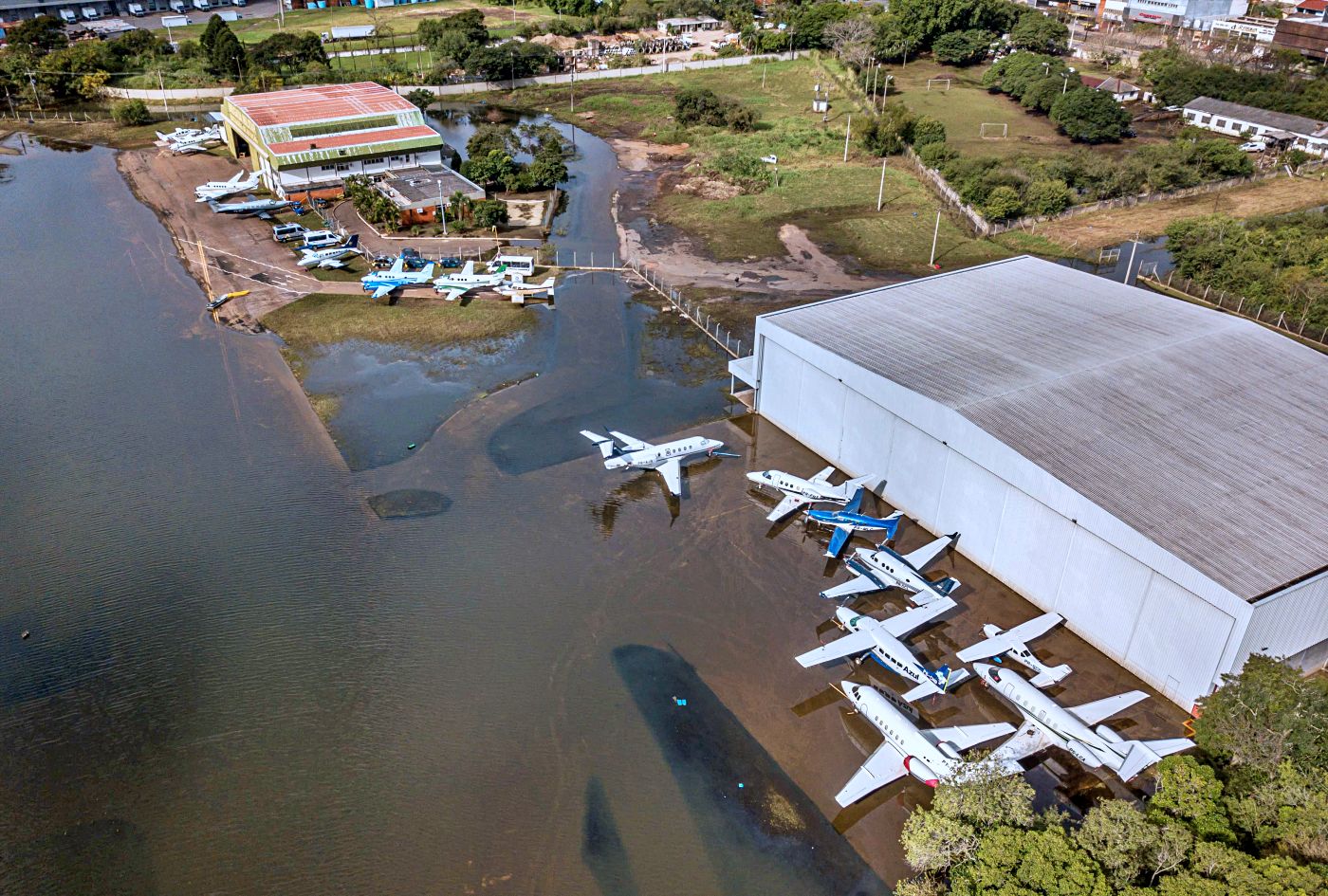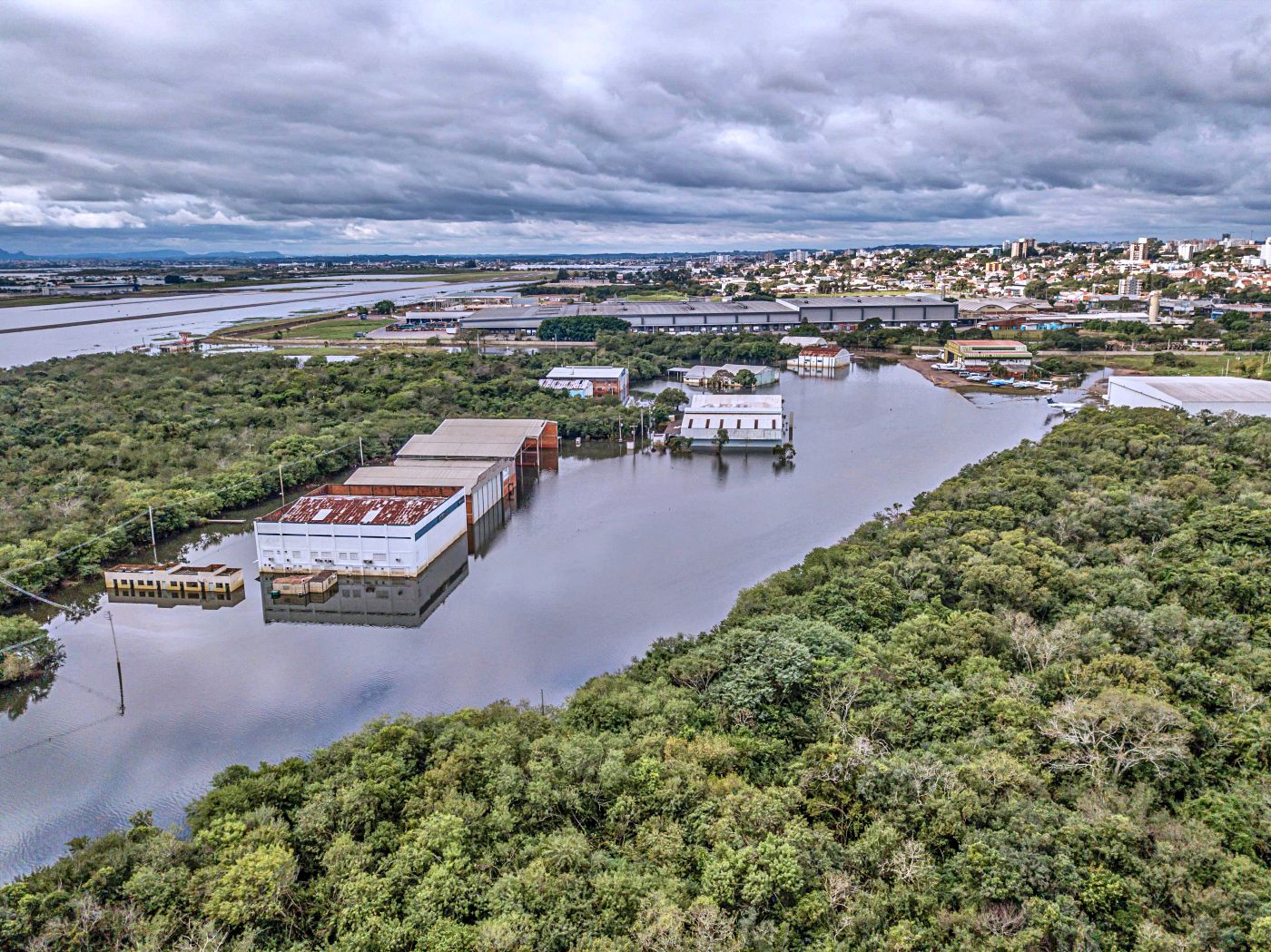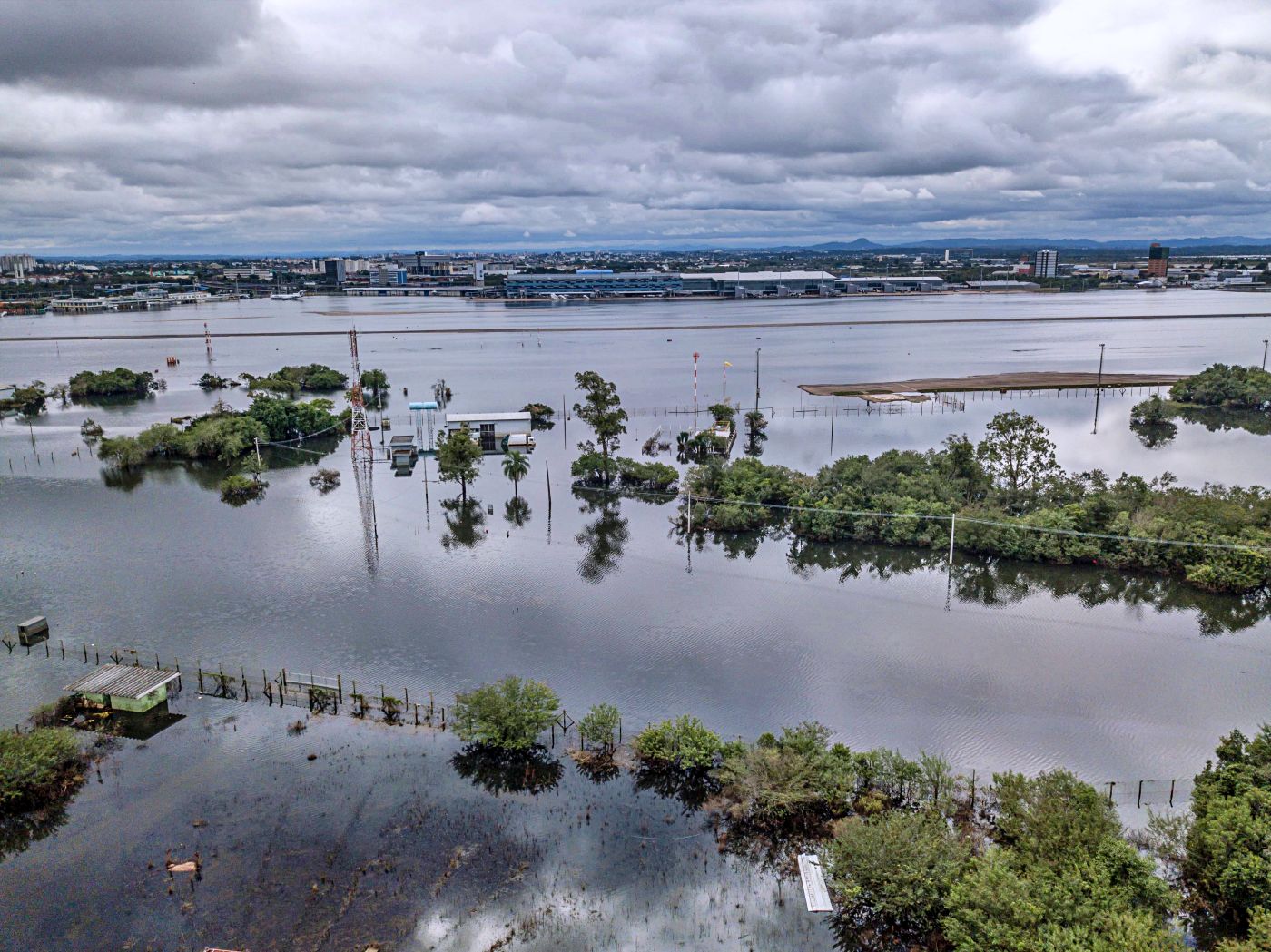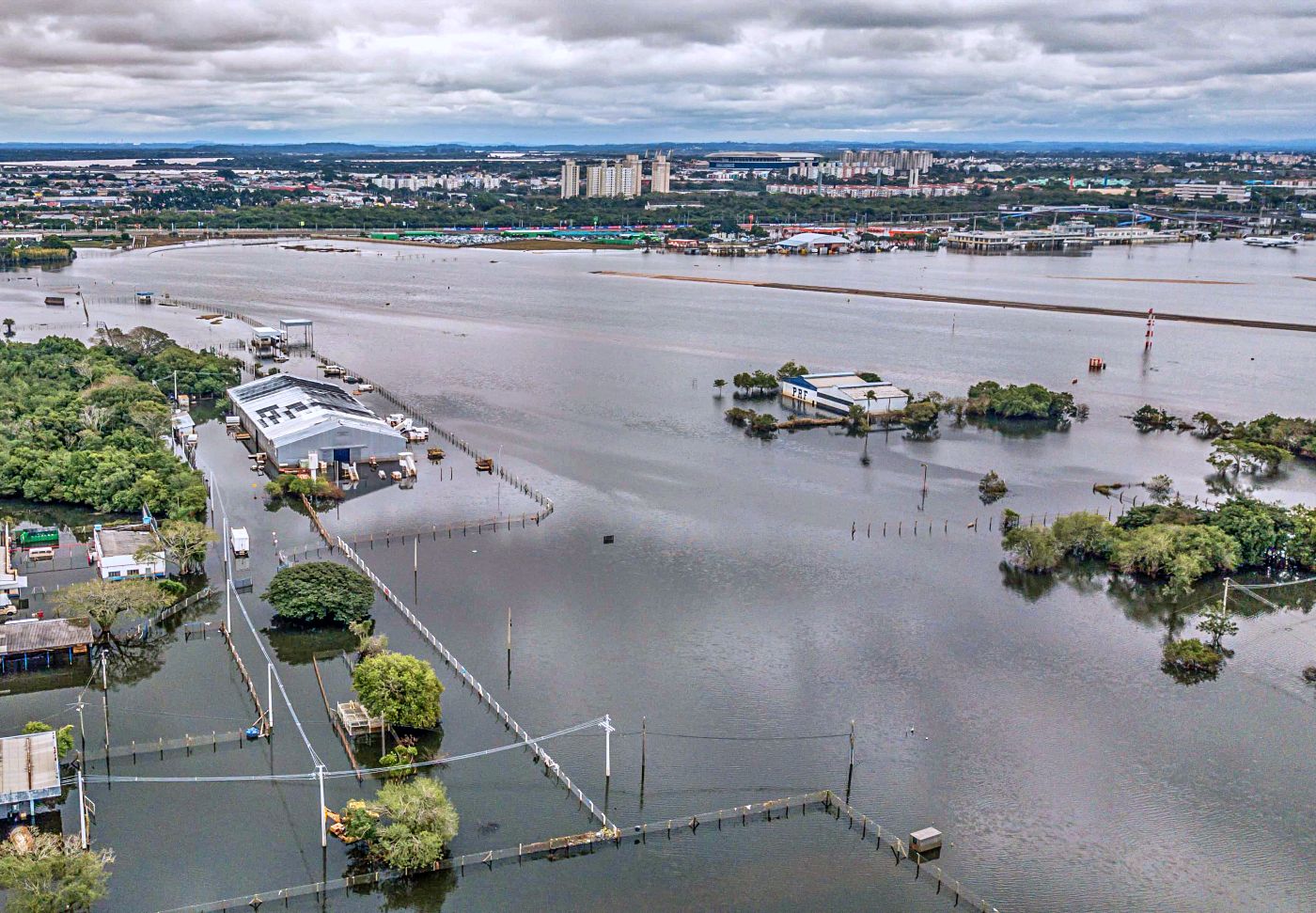An 8 million Passenger Hub Under Water: Porto Alegre Airport Today in Pictures
Nearly a month after the peak of the flood that still affects the metropolitan area of Porto Alegre, the most important city in southern Brazil, vast areas remain significantly flooded, including the Salgado Filho International Airport, which has been closed since May 4.
To grasp the magnitude of the catastrophe, the flood level of the Guaíba River is 2 meters, and when it exceeds this limit, the islands in front of downtown Porto Alegre are affected, while the central area of the city has a defense system designed to withstand a peak of 3 meters. On May 5, the river reached 5.35 meters, 70 centimeters higher than the previous worst flood in Porto Alegre’s history in 1941.
Over the past week, the Guaíba River has shown a downward trend, and as of the morning of Monday, 27th, it stands at 3.26 meters.
In this context, a photographer from Agência Brasil, a government agency, flew over the Salgado Filho International Airport over the weekend to capture striking images of the current state of the facilities.


All this is even more striking considering that we are not talking about a small provincial airport: the Salgado Filho Airport is the ninth busiest in Brazil, handling around 8 million passengers a year. Its network of destinations covers 21 cities in Brazil, as well as Buenos Aires, Lima, Lisbon, Montevideo, Panama, and Santiago de Chile. The passenger terminal spans 72,000 square meters, with 24 boarding gates (14 with jetways), 5 baggage claim belts, 60 check-in counters, and 131 commercial outlets.
Additionally, given the industrial strength of Porto Alegre and the state of Rio Grande do Sul, Salgado Filho is an important center for air cargo and executive aviation.



To address the lack of air connectivity in the region, last week, the Canoas Air Base was authorized as an alternative commercial airport, initially receiving around 160 weekly flights from Azul, Gol, and LATAM.
It is located 15 kilometers northeast of Salgado Filho, but since it does not have an adequate passenger terminal, check-in and baggage handling processes are conducted in a space provided by Fraport (the German-origin concessionaire of the airport) in a nearby shopping center.


With water levels still above the flood threshold, there is no clear perspective on when the Salgado Filho Airport will reopen.
Many damage assessments need to be conducted, from the operation of beaconing and radio aid systems to the state of the runway and taxiway pavement resistance, as well as roads, the passenger terminal, handling vehicles, jetways, and many other types of equipment.
A parallel issue is the future of Fraport’s concession and how the company will be compensated after this catastrophe to maintain the economic sustainability of the contract. Options being considered include reducing the fee to the state, extending the concession, or increasing rates.
Meanwhile, the focus is on restoring air connectivity to one of Brazil’s economic engines while also managing the arrival of humanitarian aid for the thousands affected, highlighting once again the crucial role aviation plays in communities.

/https://aviacionlinecdn.eleco.com.ar/media/2024/05/Porto-Alegre-Aeropuerto-Airport-Inundado-Mayo-2024-02.jpg)
Para comentar, debés estar registradoPor favor, iniciá sesión